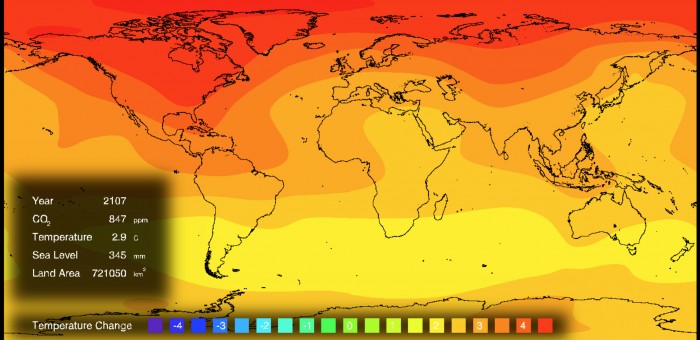Tempering expectations ahead of the 2015 Paris global warming summit
From November 30 to December 11, 2015, world leaders will gather in Paris in an attempt once more to negotiate an international treaty to reduce greenhouse gas emissions and hence global warming. Below I provide my thoughts in the lead up to this international convention.
Since the establishment of the United Nations Framework Convention on Climate Change (UNFCCC) in 1992 that came into force in 1994 and is now ratified by 195 nations, there have been twenty Conferences of Parties. There are high expectations that the upcoming twenty-first Conference of Parties (COP21) in Paris later this year will deliver an international agreement that will allow the UNFCCC to attain its objective of “stabilization of greenhouse gas concentrations in the atmosphere at a level that would prevent dangerous anthropogenic interference with the climate system.”
But this is not the first time high expectations have preceded and subsequently followed a COP. In 1997 at COP3 the Kyoto Protocol to the UNFCCC was adopted wherein Annex I nations agreed to reduce greenhouse gas emissions to 5% below 1990 levels on average by 2008-2012. While the Kyoto Protocol came into force in 2005, the lack of its binding nature, combined with Canada formally pulling out of the agreement in 2012 and the United States never ratifying it, watered down its effectiveness.
Similarly, expectations leading up to COP15 in Copenhagen were almost euphoric that a post Kyoto agreement would be reached. In the end COP15 was a disappointment. The so-called Copenhagen Accord, taken note of, as opposed to being agreed to, by the Conference of Parties outlined a loose set of aspirational goals supported by 114 nations. As part of the Copenhagen Accord, countries submitted voluntary reduction targets with the aim of holding the global temperature increase to less than 2°C. But as noted by, Rogelj (2010) if countries actually met their non-binding targets, it would be virtually certain that warming would exceed this amount. The disconnect between science and international policy is clearly quite profound.
Whether or not society chooses to take the necessary steps to mitigate climate change ultimately depends on the extent to which we value the importance of intergenerational equity. Ultimately and collectively we must ask ourselves whether or not we believe that future generations are entitled to the same environmental well-being and biodiversity that has been afforded our generation. What is clear from our scientific understanding of global warming is that the decisions being made today will have profound consequences for generations to come; yet future generations are not part of today’s decision making and today’s decision makers won’t have to live the consequences of the decisions they make.
Science can never be used to answer a question concerning the importance of intergenerational equity nor can it ever be used to prescribe a particular policy. However, science is able to examine the implications of various policy options. Policy can also be developed or modified to reflect the latest science. But in the end, the formulation of policy requires engaging a variety of stakeholders including special interests, religious groups, and industry. It also requires dealing with ethical, political, legal, financial and social issues including any potential application of the precautionary principle.
One thing that seems clear is that the nonbinding international climate treaty process to date has been a colossal failure. The negotiations have played out like a textbook example of the tragedy of the commons. It is in every person’s best financial interest to do absolutely nothing about greenhouse gas mitigation since the cost of action is borne by the individual yet the cost of inaction is distributed amongst billions of people in the generations to come.
Perhaps as we move forward with the COP process a more useful role for the United Nations at this juncture would be to attempt to reach agreement on an internationally acceptable price trajectory for carbon emissions. Such carbon pricing might include provisions that allow carbon tariffs to be added to imports from nations that have not implemented a domestic carbon pricing policy. For without global efforts to ensure the internalization of externalities associated with these emissions, it seems unlikely that announcing more non-binding aspirational reduction targets will be an effective mitigative tool. We’ve had more than two decades of evidence that this process has not worked.
Here science can be helpful in informing international pricing discussions by recognizing that warming responds near-linearly to cumulative carbon emissions. This allows for the calculation of the allowable emissions required to ensure future warming is below some specified (say 2°C) level (Weaver 2008; Allen et al., 2009; Meinshausen et al., 2009; Zickfeld et al., 2009).
Whether or not such discussions take place of course relies upon political will. The barriers to introducing climate change policy that would ensure a sustainable future are neither technological nor behavioural. They are almost purely political. For until such time as our elected leaders recognize and subsequently act upon the knowledge that the long-term climatic impacts of their decisions, or more appropriately lack thereof, are very serious, we see little prospect of meaningful international agreements being reached through the UNFCCC process.
Comments are closed.




